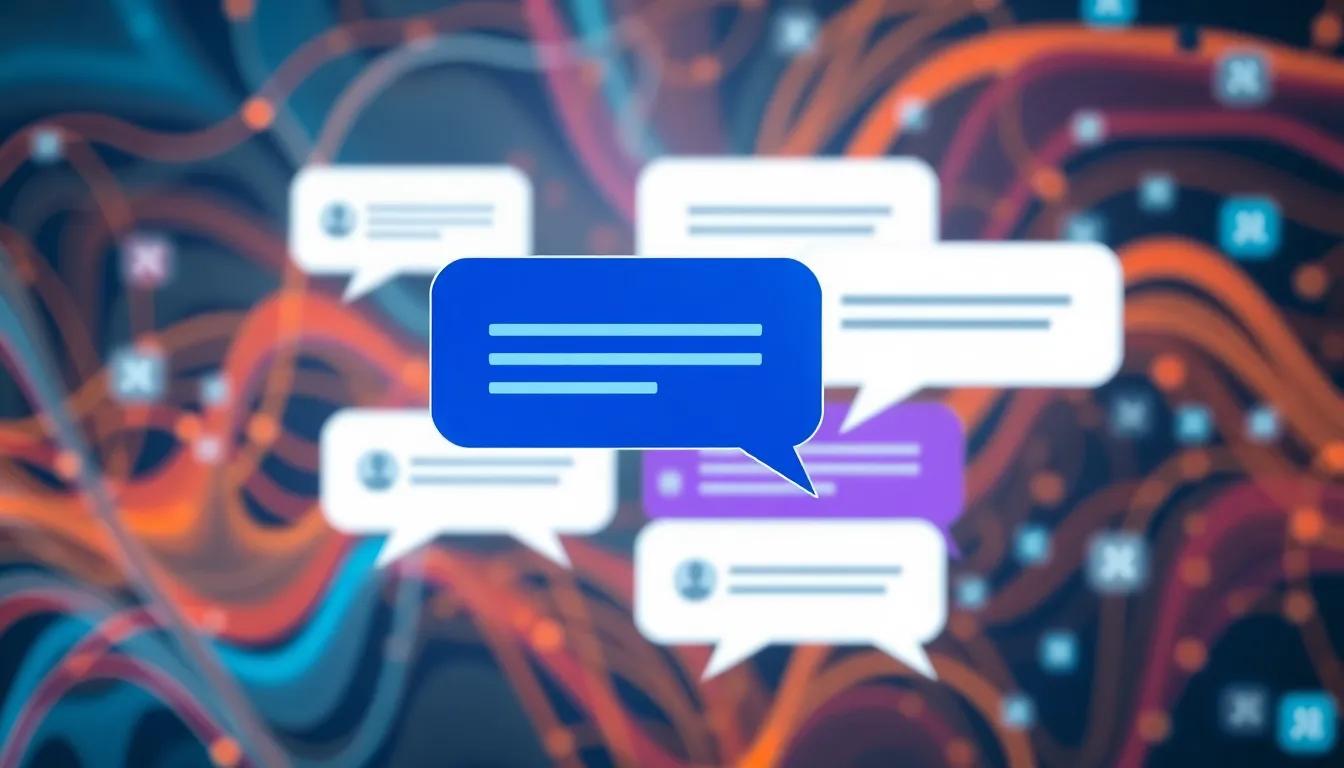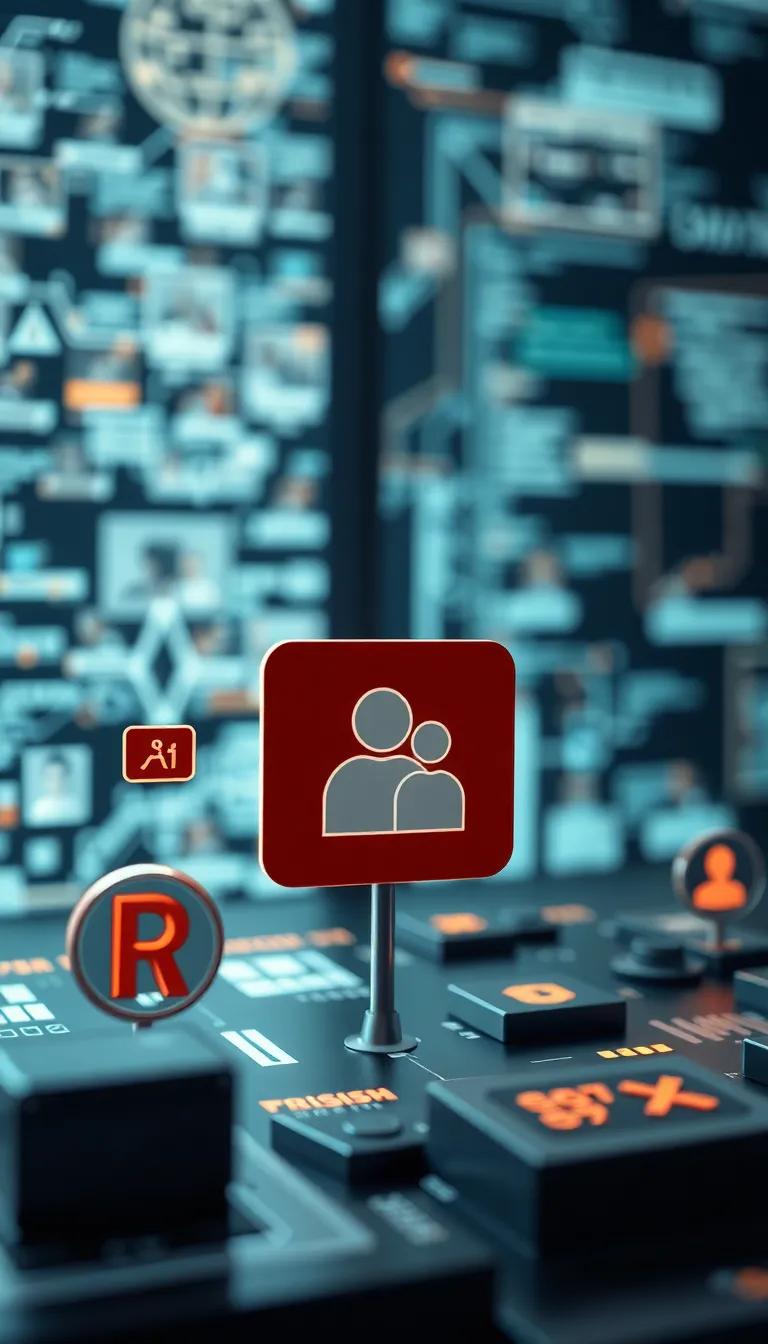Introduction
The rise of digital communication has made chat widgets a vital tool for businesses aiming to enhance their customer interaction experience. Understanding how to implement free chat solutions effectively can significantly boost customer satisfaction, result in higher conversion rates, and provide immediate assistance to web visitors. This guide delves into the best practices for utilizing chat technology, ensuring businesses capture leads while simultaneously enhancing customer loyalty.
Integrating an effective chat widget into a website is not merely about adding another feature but optimizing communication with users. With options ranging from sophisticated chatbots to simple live chat functions, companies can tailor their approach to meet diverse customer needs. This article aims to provide comprehensive insights and practical steps to achieve success with your chat widget, ensuring you remain competitive in today’s fast-paced digital arena.
Understanding Chat Widgets Importance in Modern Customer Service
Chat widgets have become integral tools in the realm of customer service, functioning as a direct line of communication between businesses and their clients. These dynamic tools significantly enhance user engagement by offering real-time interactions that foster a sense of immediacy and connection. As consumers increasingly expect swift responses, chat widgets serve as a vital asset in meeting these demands, providing an efficient means for customers to seek assistance without navigating through cumbersome contact forms or lengthy phone calls.
The functionalities of chat widgets vary, but their core features typically include live chat support, automated responses, and integration with customer relationship management (CRM) systems. Live chat support allows customer service representatives to engage with users instantly, addressing their queries and concerns as they arise. Automated responses, often powered by artificial intelligence, can handle frequently asked questions, directing users toward appropriate solutions even when human agents are unavailable. This dual approach not only reduces workload for support teams but also enhances customer satisfaction by ensuring that inquiries are addressed promptly.
Chat widgets can be seamlessly integrated into existing websites, making them accessible without the need for users to download additional software or applications. This ease of access encourages customers to reach out for support, eliminating barriers that may have previously deterred them from seeking assistance. By providing a familiar and straightforward interface, chat widgets leverage user convenience, leading to increased engagement and potential conversions for businesses.
In addition to real-time communication, chat widgets offer valuable analytics capabilities. Businesses can track interaction data, gaining insights into customer behavior and preferences. This treasure trove of information empowers companies to tailor their services, address common pain points, and ultimately enhance the overall customer experience. The analysis of these interactions also enables businesses to refine their sales strategies and improve their products or services based on direct feedback from users.
Chat widgets are not merely a trend but a fundamental component of modern customer service strategy. Their ability to provide instant communication, automate responses, integrate with existing systems, and deliver actionable insights underscores their value in improving user engagement. By embracing these solutions, businesses can cultivate stronger relationships with their customers, driving satisfaction and loyalty in an increasingly competitive market.
Types of Chat Solutions Exploring Various Chat Solutions for Enhanced Customer Engagement
In the evolving landscape of customer service, choosing the right chat solution can significantly enhance user engagement and streamline communication. Numerous chat solutions are available, each designed with specific features that cater to unique business needs. Understanding these solutions can help in selecting the most effective tool for your website.
Live Chat Solutions
Live chat solutions are among the most popular chat types, providing real-time interactions between customers and support agents. These systems typically feature easy integration into websites, allowing businesses to offer immediate assistance to visitors. One notable advantage of live chat is its ability to handle multiple conversations simultaneously, making it ideal for high-traffic websites, such as e-commerce platforms.
Key features of live chat solutions often include:
- Real-time visitor monitoring
- Transcripts of chat conversations
- Customizable chat widgets
- Mobile app support for agents
Businesses looking to provide prompt customer support should consider this option, as it not only increases customer satisfaction but also helps in converting leads into sales.
Chatbot Solutions
Chatbots represent a more automated approach to customer engagement. These AI-driven solutions can automate responses to common inquiries, allowing businesses to operate around the clock without human intervention. They are particularly effective for answering frequently asked questions or guiding users through specific processes, such as order tracking or appointment scheduling.
Distinctive features of chatbot solutions typically include:
- Integration capabilities with various platforms
- Natural language processing for better understanding
- Customizable workflows and responses
- Analytics to track engagement performance
Chatbots are ideal for businesses that require instant support without the constant need for human resources, making them a cost-effective solution for engaging customers.
Hybrid Chat Solutions
Hybrid chat solutions combine both live chat and chatbot functionalities, providing a seamless transition between automated responses and live support. This type of system allows customers to interact with a chatbot initially and escalate complex queries to a live agent. Hybrid solutions are excellent for businesses that want to leverage the efficiency of chatbots while maintaining human interaction for intricate issues.
Key aspects of hybrid chat solutions often include:
- Configuration options for seamless handoffs
- Tracking user journey through both automated and manual channels
- Enhanced user experience and satisfaction
These solutions cater to diverse customer needs, allowing businesses to optimize their customer engagement strategies.
Selecting the right chat solution involves weighing the unique features, intended use cases, and specific customer service goals of your organization. Understanding these types of chat solutions is the first step toward achieving successful customer engagement with a chat widget on your website.
Setting Up Your Chat Widget Ultimate Chat HowTo for Free Website Chat Widget Success
Integrating a chat widget into your website is a powerful way to enhance customer engagement. This integration process involves a series of technical and design considerations that can significantly impact the success of your chat solution. Understanding these aspects will help you maximize the utility of your chat interactions.
Integrating the Chat Widget: Technical Steps
The first step in integrating a chat widget is selecting the right chat solution that aligns with your business goals. Once you’ve made your choice, you typically receive a snippet of HTML or JavaScript code from the chat provider. This code is your tool for deployment. To set it up, follow these steps:
- Access your website’s HTML editor or content management system (CMS).
- Locate the appropriate spot for the chat widget code—usually in the footer or just before the closing tag to ensure it loads correctly on all pages.
- Paste the code snippet from your chat solution provider and save the changes.
- Test the widget functionality on multiple devices to ensure proper integration and responsiveness.
Some chat solutions offer plugins for popular CMS platforms like WordPress, making the installation process even simpler. Always ensure that your website’s privacy policy is updated to include information on chat interactions, as user data protection is paramount.
Design Aspects: Crafting an Inviting Chat Experience
The visual design of your chat widget is equally important as the technical integration. An appealing and user-friendly chat interface builds trust and encourages interactions. Here are some design tips:
- Branding: Customize the chat widget’s color scheme, logo, and font to match your brand identity. This creates a seamless user experience.
- Placement: Strategically position the chat widget in a location that is easily accessible but not intrusive. A common practice is to place it in the bottom right corner of the page.
- Welcome Messages: Create friendly and inviting welcome messages that automatically greet users as they land on your site. Tailor these messages to suit your audience for a personalized touch.
- Response Options: Offer quick reply buttons for common inquiries, which can expedite the conversation and enhance user satisfaction.
The integration and design of your chat widget play a significant role in ensuring a smooth and engaging experience for your visitors. With the right technical setup and aesthetic considerations, your chat solution will serve as an invaluable tool in improving customer engagement.
Optimizing Chat Interactions for Free Website Chat Widget Success
Enhancing User Interactions
In digital customer service, optimizing chat interactions is paramount for establishing strong connections with users. One of the first aspects to consider in enhancing these interactions is response time. Customers today expect quick, efficient responses, and they are less likely to engage with a business that has prolonged wait times. To address this, implementing automated responses for common inquiries can drastically reduce response time. Chatbots can handle tier-one queries, allowing human agents to focus on more complex issues that require a personal touch.
Another vital strategy is to ensure high conversation quality. This can be achieved by training chat agents thoroughly on product knowledge and customer service skills. Providing them with scripts or guidelines can streamline interactions while still allowing for a natural conversational flow. Moreover, incorporating user feedback tools, such as rating systems after chat sessions, can help identify areas for improvement in conversational techniques and responsiveness.
Building Empathy and Engagement
To further enhance user interactions, fostering empathy in conversations is key. Chat agents who actively listen, acknowledge customer concerns, and provide personalized responses create a sense of connection that encourages ongoing dialogue. This can significantly elevate the customer experience. Encouraging your team to use the customer’s name, reference previous interactions, and contextualize their responses can add a personal touch that makes a difference.
Employing proactive engagement techniques can initiate conversations before customers even ask for assistance. This could be accomplished through triggers based on user behavior on the website, such as hovering over a product for an extended period or visiting a frequently asked questions page. Offering assistance at these critical moments can facilitate smoother interactions and potentially increase conversion rates.
In all these strategies, continuous monitoring and analysis of chat metrics such as average response time, resolution rates, and user satisfaction levels will provide insights into the effectiveness of your optimization efforts. Adjusting your approach based on these metrics fosters an adaptive chat strategy that evolves with user needs and expectations.
By focusing on rapid response time, conversation quality, and empathetic engagement, businesses can significantly enhance user interactions, leading to improved customer satisfaction and loyalty. These efforts lay the foundation for effective chat solutions, seamlessly transitioning into their leveraged use as powerful marketing tools in the next chapter.
Leveraging Chat for Marketing Enhancing Customer Engagement
Chat solutions have emerged as powerful tools in the realm of marketing, allowing businesses to communicate with customers in real-time. These platforms can be utilized strategically to engage users and nurture leads, ultimately driving conversions. By integrating chat widgets on websites, companies can initiate conversations with their visitors, effectively cultivating connections that lead to higher customer conversion rates.
Creating Tailored Customer Experiences
One of the most significant advantages of using chat solutions in marketing is the ability to create personalized interactions. By utilizing data from past customer interactions, businesses can tailor messaging to meet the specific needs of each visitor. For instance, if a customer has previously shown interest in a particular product or service, a chat widget can greet them with relevant offers or information, enhancing their overall experience.
Businesses can deploy chatbots equipped with artificial intelligence to handle routine inquiries. This capability not only frees up human agents to manage more complex questions but also ensures that visitors receive instant responses. Customization is key here; adopting a conversational tone that aligns with the brand’s voice can make these interactions feel more authentic and engaging.
Driving Sales Through Strategic Offers
Chat solutions can also serve as catalysts for sales by upselling and cross-selling products. When a potential customer interacts with a chat widget, agents can recommend related products or services based on the user’s interests or past purchases. Furthermore, incorporating promotional offers directly into chat conversations can create urgency, encouraging customers to complete their purchases immediately.
Integrating chat features with customer relationship management (CRM) tools enables businesses to monitor these interactions closely. By analyzing chat transcripts, companies can gain insights into customer preferences and pain points, fueling future marketing strategies that resonate with the target audience.
Another effective strategy involves using chat engagement data to tailor content marketing efforts. By understanding what customers are asking about most frequently, businesses can create relevant content—such as FAQs, blog posts, or video tutorials—that addresses these questions. This not only positions the company as an industry expert but also drives traffic back to the site, further enhancing engagement.
As businesses explore the marketing potential of chat solutions, it is vital to remember that consistent and meaningful interactions build trust and foster loyalty. Employing these tools effectively can lead to enriched customer relationships, ultimately resulting in sustained business growth.
Challenges and Solutions Achieving Success with Chat Solutions
Common Challenges Faced by Businesses
Implementing chat solutions can present a variety of challenges for businesses striving to enhance customer engagement. One of the primary issues is the integration of the chat widget into existing platforms. Companies often struggle with technical compatibility, which can lead to disruptions in service and customer dissatisfaction. Inconsistent or fragmented technology stacks can hinder seamless communication, particularly when organizations utilize multiple tools for sales, support, and marketing.
Another common obstacle is the lack of trained personnel to manage chat interactions effectively. Many businesses underestimate the need for staff dedicated to live chat management or fail to provide adequate training for those involved. This can result in slow response times and inconsistent messaging, diminishing the potential of chat as a customer service tool.
Companies may encounter difficulties in understanding customer expectations. People often seek quick resolutions to their inquiries. If chat support does not meet these expectations, customers may disengage and turn to competitors. Balancing the need for fast service with the desire to provide thorough and thoughtful answers can create a conundrum for businesses.
Effective Solutions to Overcome These Challenges
To address the integration issues, businesses should prioritize selecting a chat widget that is compatible with their existing systems. Utilizing platforms that offer easy setup and customization can significantly enhance the user experience. Engaging with technical support during implementation can also smooth out potential disruptions, ensuring a more reliable overall conversation flow.
On the staffing side, organizations can enhance their chat effectiveness by investing in training programs focused on communication skills, product knowledge, and customer service best practices. Developing a standard operating procedure for chat interactions can help to ensure that all team members provide consistent and timely responses, thus improving customer trust and satisfaction.
Gathering customer feedback is crucial for adapting chat strategies. Businesses can use analytics to assess chat interactions, identify frequently asked questions, and understand response times. This data can inform ongoing training initiatives and enable companies to adjust their chat functionalities according to client needs, thereby ensuring they remain relevant and responsive in a fast-paced market.
The Future of Chat Technology Enhancing Business Communication through Advancements
Emerging Trends in Chat Technology
The landscape of chat technology is rapidly evolving, influenced by the demand for more efficient and personalized customer interactions. Businesses are increasingly leveraging artificial intelligence and machine learning to enhance their chat solutions, paving the way for the future of customer communication. Chatbots are becoming smarter, capable of understanding context, and can even predict user needs by analyzing previous interactions. This shift is not merely about automating conversations but fostering meaningful engagements that can lead to increased customer loyalty.
The integration of chat solutions with other digital tools is set to redefine business communication. From CRM systems to social media platforms, seamless connectivity allows businesses to have a unified view of customer interactions. This holistic approach enables companies to deliver consistent messaging and personalized experiences across various channels, addressing consumer expectations for immediacy and relevance.
The Role of Natural Language Processing and Voice Technology
Natural Language Processing (NLP) is transforming how chatbots interact with users. The capability to understand and generate human-like responses will become more sophisticated, allowing for nuanced conversations. Customers will benefit from more intuitive interactions, reducing the frustration often associated with standard chat interfaces. As NLP advances, chat technologies will bridge the gap between human and machine, making interactions feel more authentic.
Voice technology is gaining traction as a complementary addition to text-based chat. Voice-activated chat interfaces will provide users with an alternative, often more convenient means of communication. Businesses that adopt voice chat capabilities can cater to a broader audience, including those who prefer voice interactions over typing. This trend also reflects a growing consumer comfort level with voice assistants in their daily lives.
Businesses will need to stay ahead of these trends by investing in training for their staff and upgrading their chat solutions to incorporate the latest technologies. This proactive approach will not only enhance customer experience but will also position companies as leaders in the digital communication space.
As technology progresses, it will drive innovation and redefine expectations around customer service. Companies that embrace this future will unlock new avenues for engagement, ensuring they remain relevant in an increasingly competitive market.
Conclusions
Utilizing a chat widget effectively can significantly enhance customer engagement and retention, making it a pivotal tool for modern businesses. By understanding the varying chat solutions available and optimizing their implementation, companies can create meaningful interactions that drive satisfaction and growth. It is essential to continually assess the effectiveness of chat strategies to adapt to evolving market demands and customer expectations.
As we look to the future, emerging technologies will undoubtedly reshape the chat landscape. Businesses that embrace innovation and remain flexible in their approach to chat solutions will thrive in an increasingly digital world. Investing in the right chat tools and continuously refining user interactions will ensure sustained success and a competitive edge in the ever-evolving market.


















